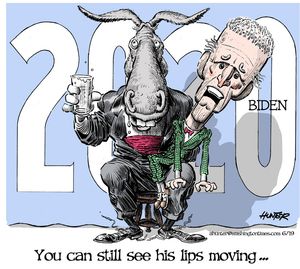DWYER: Bush tax cuts boosted federal revenue
ANALYSIS/OPINION:
A favorite liberal narrative is that President George W. Bush squan- dered the Clinton-era budget surpluses and piled up deficits with expensive wars and tax cuts for the rich. Candidate Barack Obama used this tale to great effect, and President Obama tells it still. Take his State of the Union address last week, when Mr. Obama attributed the Bush-era deficits to “paying for two wars, two tax cuts, and an expensive prescription drug program.”
The truth is that Mr. Bush’s deficits were the product of spending, not tax cuts. In fact, Mr. Obama could learn an important lesson for his own economic plan by studying Mr. Bush’s two very different attempts at tax-cutting.
As the Wall Street Journal’s Stephen Moore illuminates in his 2008 book “The End of Prosperity” (Threshold Editions), Mr. Bush’s 2001 tax cuts failed to revive an economy still staggering from the bursting of the dot-com bubble. Mr. Bush’s strategy had been to adopt a demand-side, Keynesian stimulus, hoping that putting a few extra dollars in Americans’ pockets would jump-start the economy through increased consumption. This approach faltered, not just because Americans opted to save their rebates, but because it neglected the importance of business investment to overall growth. Predictably, the economy lagged and government revenues stagnated. What the United States needed then (and needs now) was to stimulate investment, not consumption.
By 2003, Mr. Bush grasped this lesson. In that year, he cut the dividend and capital gains rates to 15 percent each, and the economy responded. In two years, stocks rose 20 percent. In three years, $15 trillion of new wealth was created. The U.S. economy added 8 million new jobs from mid-2003 to early 2007, and the median household increased its wealth by $20,000 in real terms.
But the real jolt for tax-cutting opponents was that the 03 Bush tax cuts also generated a massive increase in federal tax receipts. From 2004 to 2007, federal tax revenues increased by $785 billion, the largest four-year increase in American history. According to the Treasury Department, individual and corporate income tax receipts were up 40 percent in the three years following the Bush tax cuts. And (bonus) the rich paid an even higher percentage of the total tax burden than they had at any time in at least the previous 40 years. This was news to the New York Times, whose astonished editorial board could only describe the gains as a “surprise windfall.
Unfortunately, Mr. Bush allowed Congress to spend away those additional tax revenues. The fact is that the increase in tax revenues that flowed from the ‘03 tax cuts could have paid for the wars in Afghanistan and Iraq and then some but for rampant discretionary domestic spending.
A favorite liberal narrative is that President George W. Bush squan- dered the Clinton-era budget surpluses and piled up deficits with expensive wars and tax cuts for the rich. Candidate Barack Obama used this tale to great effect, and President Obama tells it still. Take his State of the Union address last week, when Mr. Obama attributed the Bush-era deficits to “paying for two wars, two tax cuts, and an expensive prescription drug program.”
The truth is that Mr. Bush’s deficits were the product of spending, not tax cuts. In fact, Mr. Obama could learn an important lesson for his own economic plan by studying Mr. Bush’s two very different attempts at tax-cutting.
As the Wall Street Journal’s Stephen Moore illuminates in his 2008 book “The End of Prosperity” (Threshold Editions), Mr. Bush’s 2001 tax cuts failed to revive an economy still staggering from the bursting of the dot-com bubble. Mr. Bush’s strategy had been to adopt a demand-side, Keynesian stimulus, hoping that putting a few extra dollars in Americans’ pockets would jump-start the economy through increased consumption. This approach faltered, not just because Americans opted to save their rebates, but because it neglected the importance of business investment to overall growth. Predictably, the economy lagged and government revenues stagnated. What the United States needed then (and needs now) was to stimulate investment, not consumption.
By 2003, Mr. Bush grasped this lesson. In that year, he cut the dividend and capital gains rates to 15 percent each, and the economy responded. In two years, stocks rose 20 percent. In three years, $15 trillion of new wealth was created. The U.S. economy added 8 million new jobs from mid-2003 to early 2007, and the median household increased its wealth by $20,000 in real terms.
But the real jolt for tax-cutting opponents was that the 03 Bush tax cuts also generated a massive increase in federal tax receipts. From 2004 to 2007, federal tax revenues increased by $785 billion, the largest four-year increase in American history. According to the Treasury Department, individual and corporate income tax receipts were up 40 percent in the three years following the Bush tax cuts. And (bonus) the rich paid an even higher percentage of the total tax burden than they had at any time in at least the previous 40 years. This was news to the New York Times, whose astonished editorial board could only describe the gains as a “surprise windfall.
Unfortunately, Mr. Bush allowed Congress to spend away those additional tax revenues. The fact is that the increase in tax revenues that flowed from the ‘03 tax cuts could have paid for the wars in Afghanistan and Iraq and then some but for rampant discretionary domestic spending.
Worse still, Mr. Obama’s $3.8 trillion budget for 2011 would allow the Bush tax cuts to expire, imposing new prosperity-killing taxes on businesses, investors and individuals. The president would do better to follow his predecessor and embrace the winning strategy of supply-side tax cuts. He even might find that Americans would welcome this new story line. After all, liberal economic fairy tales are growing tiresome, even for Massachusians.


No comments:
Post a Comment